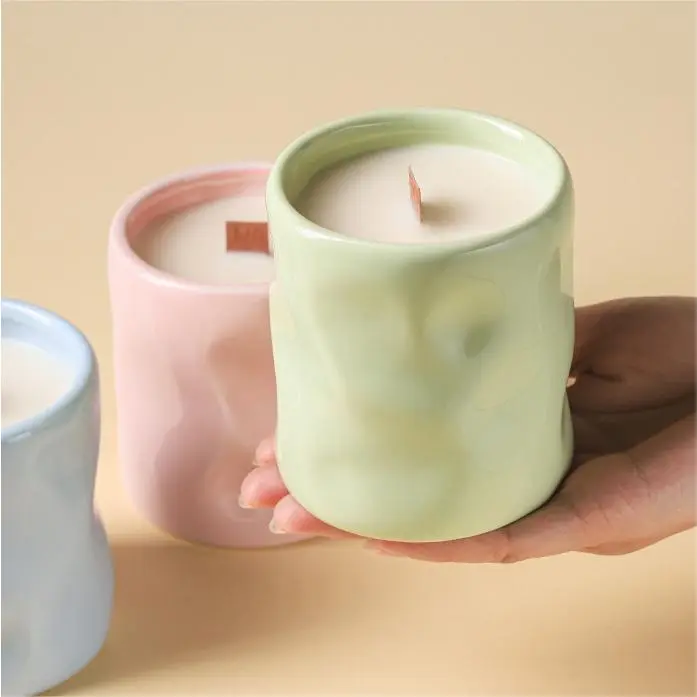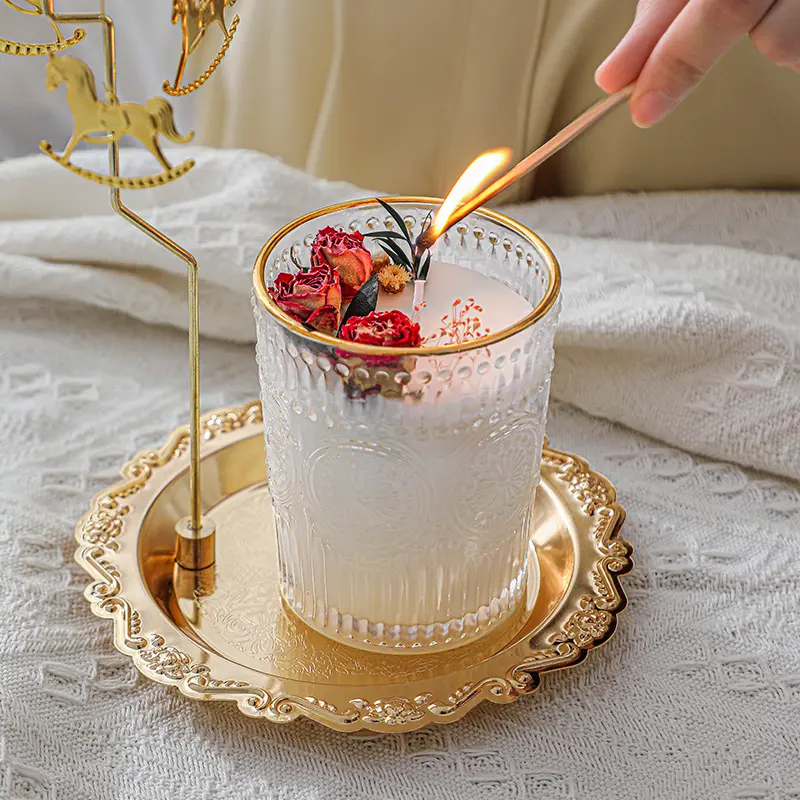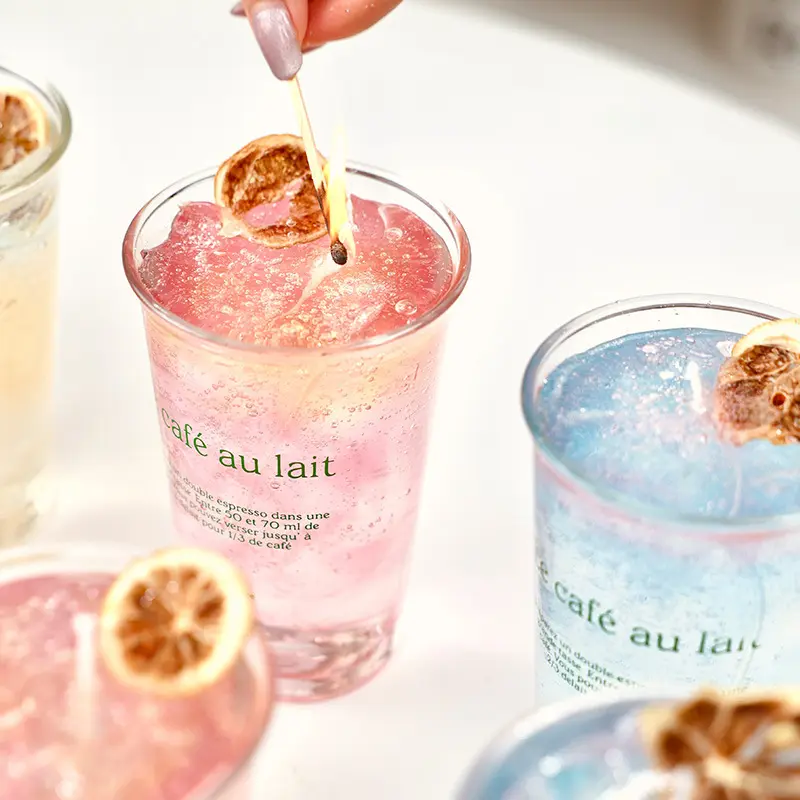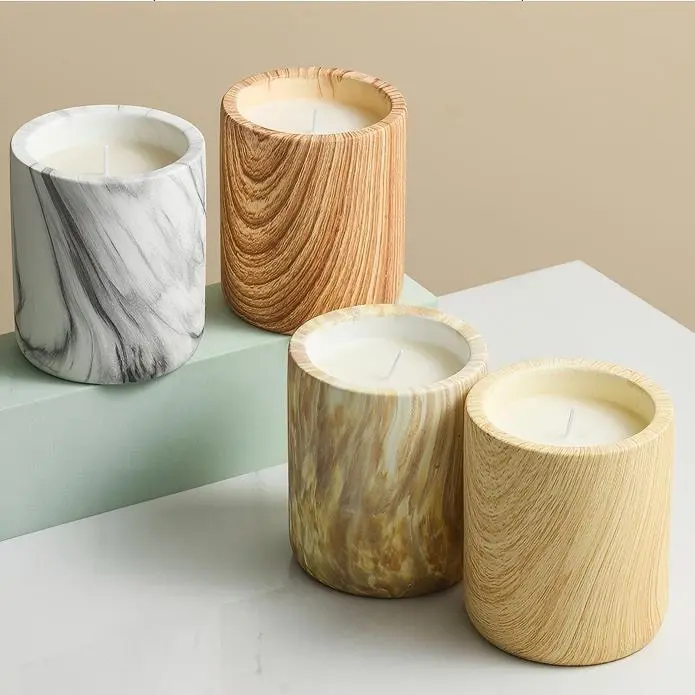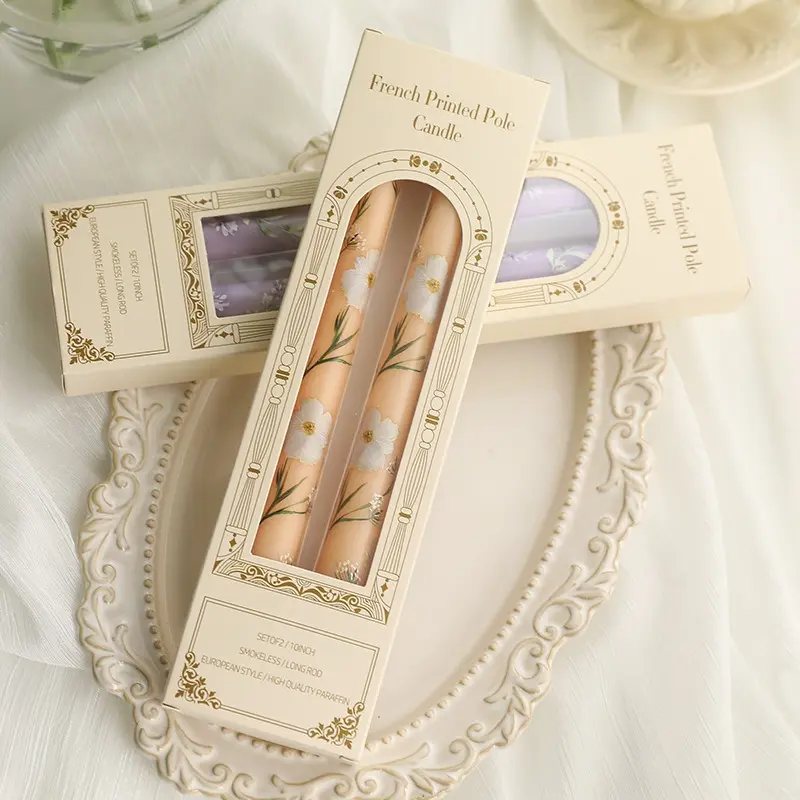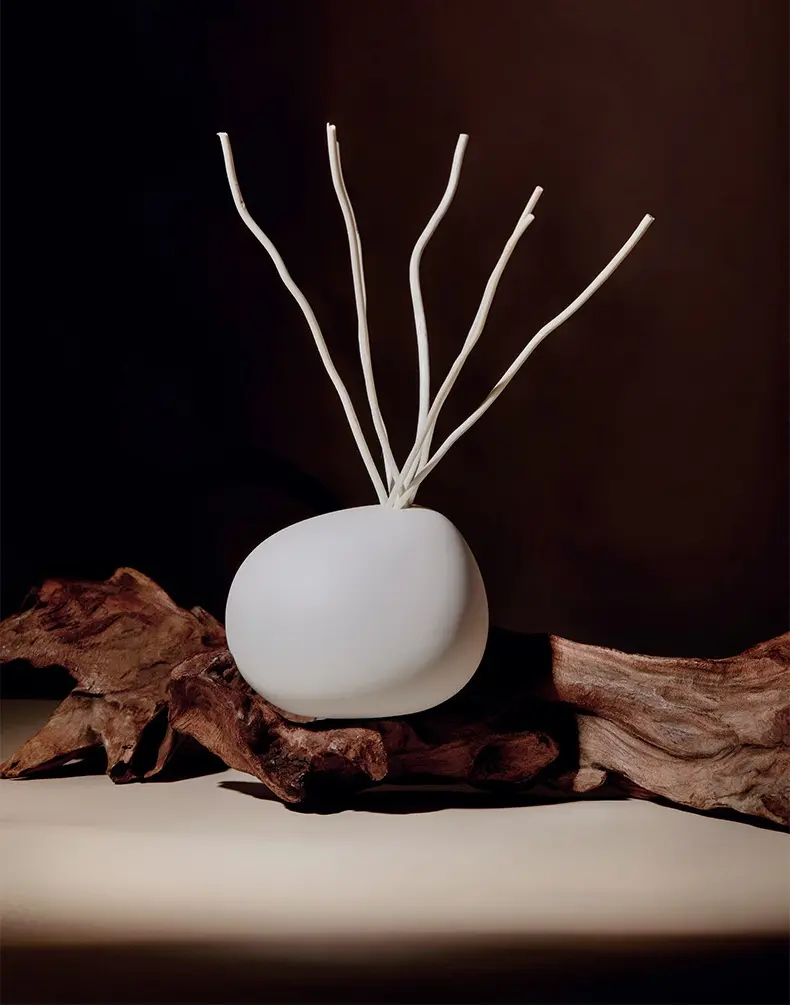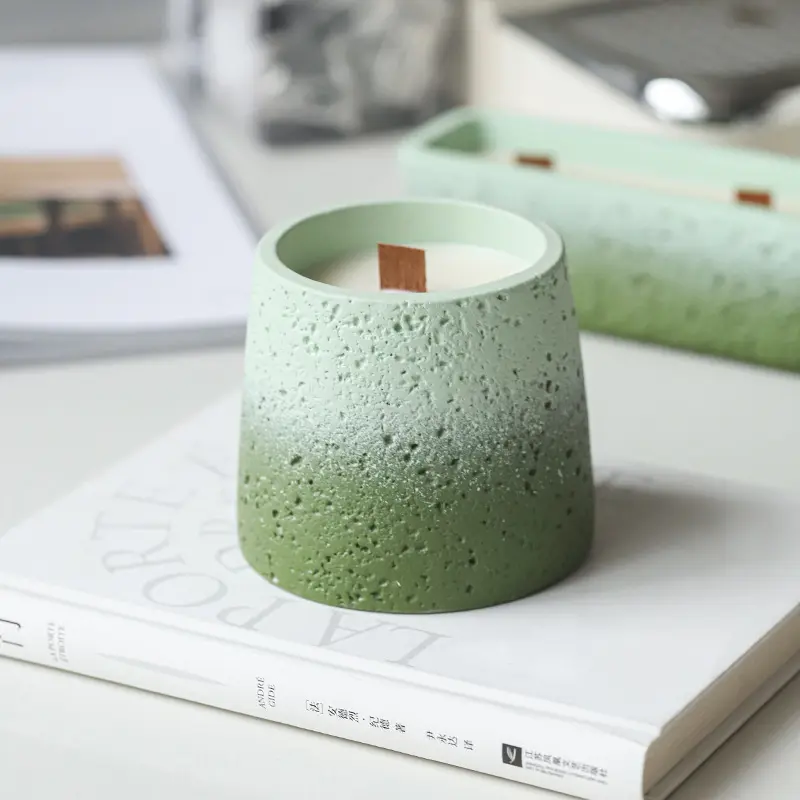Starting a candle business can be both creative and profitable—especially in today’s expanding home fragrance market. Consumers worldwide are increasingly drawn to products that promote relaxation, well-being, and home aesthetics, and scented candles perfectly combine all three. However, succeeding in this competitive market requires more than just crafting beautiful candles—it demands research, strategy, and quality execution.
This article provides practical, research-based tips for starting a candle business, including market data, financial insights, product development guidance, and proven growth strategies. It concludes with a professional recommendation of CAIFEDE, a trusted manufacturer and OEM/ODM supplier for premium candle and home fragrance products.
Global Candle Market Overview
Before starting a candle business, it’s essential to understand market trends and demand growth. Data shows that the global candle and home fragrance market continues to expand steadily across both retail and e-commerce channels.
| Market Segment | 2024 Market Value (USD) | Forecast (2030/2032) | CAGR |
|---|---|---|---|
| Global candle market | 14.06 billion | 20.10 billion by 2030 | 6.4 % |
| U.S. candle market | 3.42 billion | 4.69 billion by 2030 | 5.6 % |
| Global home fragrance market | 24.89 billion | 40.55 billion by 2032 | 6.56 % |
Key Insights
The candle business remains resilient, supported by lifestyle, décor, and wellness trends.
Premium, eco-friendly, and soy wax scented candles are among the fastest-growing segments.
Around 35% of annual candle sales occur during the holiday season, underscoring the importance of seasonal marketing.
E-commerce and personalized home fragrance products are driving new opportunities for small and emerging brands.
Identify Your Niche and Target Market
The first step in starting a candle business is defining your brand niche and target audience. Candles serve different purposes—ambience, relaxation, decoration, or gifting—and each purpose appeals to a unique buyer group.
| Niche Type | Description | Target Customer |
|---|---|---|
| Eco-friendly candles | Made from 100% soy wax, beeswax, or coconut wax; marketed as sustainable | Green & health-conscious consumers |
| Luxury candles | Premium design, custom fragrances, elegant packaging | High-income customers, gift buyers |
| Aromatherapy candles | Infused with essential oils for stress relief and wellness | Health & wellness enthusiasts |
| Seasonal candles | Holiday or limited-edition scents (e.g., winter, Valentine’s Day) | Gift buyers and collectors |
| Personalized candles | Custom labels, colors, or fragrances | Corporate clients & small gift brands |
Tip: Focus on one or two segments when you start your candle business. You can expand later after building brand recognition.
View related products:
Own brand custom hand pour scented natural soy wax candles China supplier
Dried flower fruits scented candles luxury
Elegant Handcrafted Seashell Candles Home Decor UK

Product Planning and Material Selection
The heart of any candle business lies in product quality. A candle’s appearance, burn performance, and fragrance strength determine how customers perceive your brand.
Key Product Components
Wax type: Soy wax and beeswax are leading materials due to their clean burning and eco-friendly reputation.
Wicks: Cotton or wood wicks are popular for consistent burns and minimal smoke.
Fragrances: Partner with professional fragrance houses for consistent scent quality.
Containers: Glass jars, ceramic vessels, or metal tins—all customizable with your logo.
Packaging: Sustainable, premium packaging enhances the product’s perceived value.
| Wax Type | Advantages | Target Use |
|---|---|---|
| Soy wax | Renewable, clean-burning, holds fragrance well | All scented candles |
| Beeswax | Natural and long-lasting, emits negative ions | Premium or luxury candles |
| Paraffin wax | Cost-effective, good scent throw | Mass-market candles |
| Coconut wax | Smooth texture, strong fragrance retention | Boutique or wellness lines |
Quality Tip: Always test candles for burn time, scent throw, and safety before launching. Proper testing helps prevent recalls and builds trust with customers.
To learn about the differences between soy candles and paraffin candles, you can read: Soy Candles vs Paraffin Candles
To learn more about wick candles, you can read: How Do Wooden Wick Candles Work?
Build Your Brand and Story
In the candle business, emotional connection sells. Your brand story—why you make candles, what inspires your scents, and what values you uphold—drives customer loyalty.
Branding Essentials
Choose a unique brand name that reflects your personality or concept.
Design a minimalist, elegant logo for versatility across labels and packaging.
Create cohesive color palettes and vessel designs.
Highlight sustainability, craftsmanship, or cultural inspiration to build identity.
Example: A brand story such as “Creating calm moments through nature-inspired scents and sustainable materials” can resonate strongly with today’s mindful consumers.
Cost Planning and Pricing Strategy
Proper financial planning is critical when starting a candle business. Understanding your cost structure ensures profitability and scalability.
| Cost Category | Estimated Share of Retail Price |
|---|---|
| Materials (wax, wicks, fragrance) | 25 – 35 % |
| Packaging and labeling | 20 – 30 % |
| Production and labor | 10 – 15 % |
| Logistics and shipping | 10 % |
| Marketing and overhead | 10 – 15 % |
| Gross profit margin | 10 – 20 % |
Pricing Example
If your total cost per candle is USD 5 and you target a 60% gross margin, your retail price should be around USD 12–15. Premium packaging or fragrance collaborations can justify higher prices.
To learn about the price of soybean candles, you can read: Soy Wax Candle Price
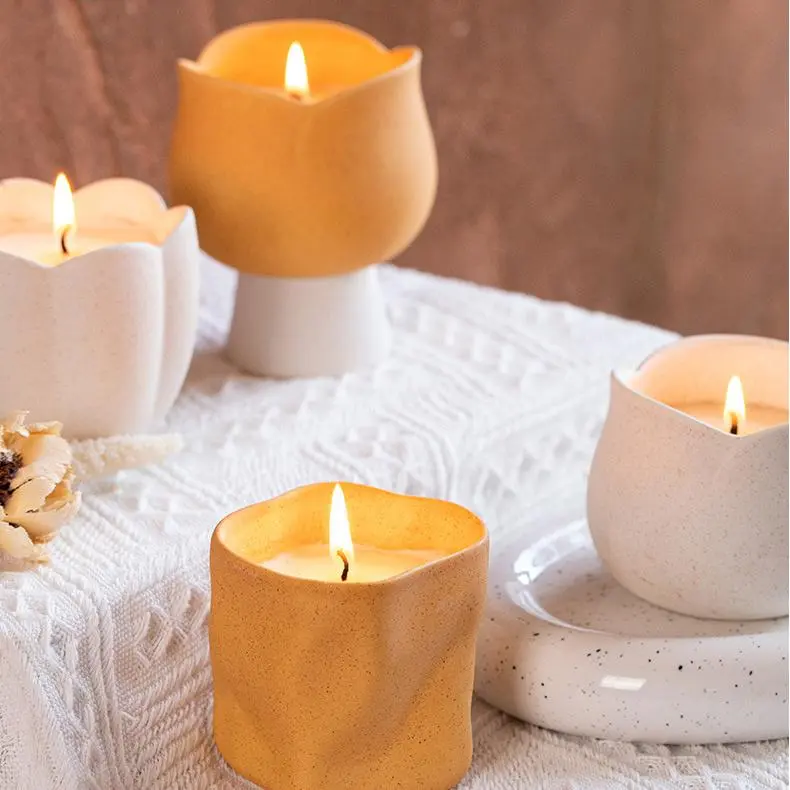
Sales Channels and Marketing
The success of a candle business depends heavily on sales channels and customer engagement. Combining online and offline strategies helps build sustainable growth.
Key Sales Channels
| Channel | Benefits | Challenges |
|---|---|---|
| E-commerce (DTC) | High margins, control over brand image | Requires strong marketing investment |
| Marketplaces (Etsy, Amazon) | Quick exposure, access to ready buyers | High competition, platform fees |
| Wholesale to retailers | Consistent volume sales | Lower margins, B2B negotiation |
| OEM/Private label | Stable orders from partner brands | Requires production capacity |
Digital Marketing Tips
Use social media platforms (Instagram, Pinterest, TikTok) to showcase your candles in home settings.
Collaborate with influencers and décor bloggers for authentic promotion.
Offer limited-edition scents for holidays and special occasions.
Encourage user-generated content and reviews to boost brand trust.
Legal, Safety, and Quality Compliance
Candles are classified as fire-related products, so safety standards and labeling are non-negotiable.
Key Compliance Areas
Safety testing: Check burn time, flame height, soot levels, and vessel heat resistance.
Labeling: Include safety icons, burn instructions, and warnings.
Regulations: Comply with REACH (EU), ASTM (US), or other national standards.
Fragrance disclosures: List any allergens as required in your target markets.
Failing to comply with safety standards can lead to product recalls and loss of reputation. For example, in 2024, over 650,000 candles were recalled in the U.S. due to burn irregularities—highlighting the importance of reliable testing and quality control.
Growth Planning and Business Expansion
Once your candle business is established, plan for sustainable growth through product diversification and brand scaling.
| Growth Stage | Focus Area | Action Plan |
|---|---|---|
| 0–6 months | Product testing and small-batch launch | Develop core scent range and packaging |
| 6–12 months | Online store optimization | Build website traffic, collect customer feedback |
| Year 1–2 | Product line expansion | Add new candle types, reed diffusers, room sprays |
| Year 2–3 | Private label & OEM cooperation | Partner with retailers or lifestyle brands |
| Year 3+ | International distribution | Scale production, attend trade shows, export |
Tip: Track data such as customer acquisition cost (CAC), repeat purchase rate, and average order value (AOV) to guide decision-making.
Common Mistakes to Avoid
Even with a great product, many new candle businesses fail due to avoidable missteps. Be aware of these pitfalls:
Ignoring market research – Leads to poor product-market fit.
Underpricing – Reduces profitability and brand perception.
Overstocking inventory – Ties up cash and increases risk.
Weak branding – Causes confusion and poor customer recall.
Skipping quality testing – Can result in safety issues and returns.
Seasonal unpreparedness – Missing holiday demand peaks.
By proactively planning around these issues, you can ensure smoother operations and sustainable growth.

Partner with CAIFEDE: Your Ideal OEM/ODM Candle Manufacturer
If you want to start or scale your candle business with professional support, CAIFEDE offers everything you need to succeed.
About CAIFEDE
Founded in Qingdao, China, CAIFEDE is dedicated to producing high-quality and uniquely designed home fragrance products that create warm, relaxing living spaces.
Our Product Range
Scented candles (soy wax, glass jar, ceramic, tin, pillar, and tea-light types)
Candle holders (customizable in color, finish, and size)
Reed diffusers, room sprays, and décor products
Why Choose CAIFEDE
100% natural soy wax & cotton wicks for clean, eco-friendly burning. (We also offer other types of wax and wax cores for you to choose from)
Partnering with top fragrance companies like Mane, Symrise, and IFF ensures you get the scent you want.
Full customization: color spraying, glossy finishes, decals, and packaging design.
OEM/ODM services with MOQ of 1,000–1,500 pieces and 45–60 days delivery after sample approval.
Professional design team to assist clients without in-house designers.
Comprehensive quality control with in-house laboratory and strict inspection system.
Packaging options include white boxes, PVC boxes, or fully customized branding.
CAIFEDE’s mission is to integrate fashion, craftsmanship, and scent artistry into every product. We focus on value and innovation, not price wars, helping partners create exclusive, market-ready candle collections.
Conclusion
The global candle business is thriving—and now is the perfect time to join it. With growing consumer demand for home fragrance and self-care products, entrepreneurs can find numerous opportunities by combining creative design with market data and quality production.
To start a successful candle business:
Understand market demand and choose your niche.
Use premium materials and safe production practices.
Develop a strong brand story and online presence.
Monitor costs and focus on sustainability.
Partner with reliable manufacturers for scalability.
If you are ready to turn your candle business vision into reality, CAIFEDE can help with professional manufacturing, fragrance customization, and design support. Together, we can create your own exclusive fragrance world. Welcome to contact CAIFEDE.

